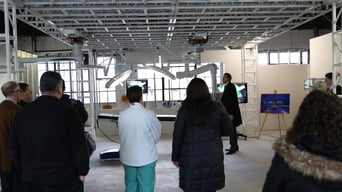 For anyone who is involved with the healthcare industry, the feeling of uncertainty is evident. What is the future of the Affordable Care Act? How can quality care be provided in an age where reimbursements are declining? What can we do to make sure we are always making advances in healthcare?
For anyone who is involved with the healthcare industry, the feeling of uncertainty is evident. What is the future of the Affordable Care Act? How can quality care be provided in an age where reimbursements are declining? What can we do to make sure we are always making advances in healthcare?
The one thing that everyone is certain of is that the future involves change. Change is a constant. Change is needed. Without changes, the future may be very bleak.
Impact of Changes
For most organizations, and even for most people, change is not a comfortable proposition. Changes take time and effort, and they can have significant cost implications. We can get very accustomed to our routines; in fact, we are pushed toward routine as a means to achieve efficiency in our daily tasks. This is very evident in healthcare where much energy is spent determining how to create standardization, finding reductions in space needs, and generally doing more with less. We participate in conversations where metrics discussed include time tracked to the second, space and clearances tracked to the inch, and the impact of the number of steps taken each day.
One of the most effective ways of changing behavior is to change the environment. This is where architecture can play a major role in helping our clients to achieve the goals they set and realize the changes that they know are imperative to the future success of their organization. It is incredibly easy to slip back into the way things have been done if the environment is the same. And, I would offer, that caregivers in healthcare settings are among the most resourceful people in finding ways to make something work, especially when things are not going as well as intended, or when extra effort is required to perform a task.
Designing for Change
As designers, it is our goal –our obligation, even – to understand what our clients are hoping to achieve with a design and construction project and help make sure that their goals and objectives are realized when the project is complete. I believe that the best projects are those that take our clients to new places with new designs and approaches that they never realized they could achieve. This is the magic of the design process, and a skillful designer will not only listen closely to what a client is saying, but will also deeply understand what underlies those requests.
 I once led a project team through the design of what could have been a fairly modest ambulatory care center in a nearby community. This client had taken over several locations in retail centers and had even considered renovating an existing vacant store for this ambulatory facility, but they ultimately agreed that constructing a new facility would make a better statement and better support their mission and vision. As the design progressed, the client teams became very excited about the opportunity. They wanted to forget about how they had been practicing in the past and achieve a new way of delivering care to the community. They would even find articles about healthcare innovations and bring them to meetings to see if others might see new opportunities. We mocked up rooms with cardboard, tested concepts, and collaboratively made decisions about the design direction.
I once led a project team through the design of what could have been a fairly modest ambulatory care center in a nearby community. This client had taken over several locations in retail centers and had even considered renovating an existing vacant store for this ambulatory facility, but they ultimately agreed that constructing a new facility would make a better statement and better support their mission and vision. As the design progressed, the client teams became very excited about the opportunity. They wanted to forget about how they had been practicing in the past and achieve a new way of delivering care to the community. They would even find articles about healthcare innovations and bring them to meetings to see if others might see new opportunities. We mocked up rooms with cardboard, tested concepts, and collaboratively made decisions about the design direction.
As construction neared completion, the users could not wait to get into their new facility and start implementing the changes they had worked so hard to design. Several weeks after the opening of the facility, I had the pleasure of speaking with the wife of a physician who had been practicing for over 40 years in the same location. She shared how he had worried about this new clinical configuration, about sharing resources, and about how this was going to impact him and his patients. After the very first week in the new space, he was absolutely elated with the change and able to spend more time with his patients providing them with care he had never been able to at his old location. Stories like this make the time and efforts that go into design so rewarding and underscore the importance of a rigorous and thoughtful design process.
Change is the Future
There is no doubt that architecture enables change; but today, that is not enough. Changes are coming at an ever-increasing pace. What is cutting edge today is an obsolete approach a year from now. Just as healthcare responds to changes in the market, healthcare facilities need to adapt to those changes as well. This has implications throughout the design and construction process. A flexible facility needs to be designed to allow for revisions without requiring a major overhaul of a space, which may have cost implications on what we do today. It may mean that future-proofing is built into the original design, it may mean different materials are used, and it will definitely require users to think further into the future than ever before and (at times) take some risks by deciding where the future of healthcare is heading.
Designing for change is not easy, but taking the time and making the effort to plan for change will have definite rewards over the lifecycle of a building.
Learn how Array's approach helped Robert Wood Johnson change for the better in our most recent case study.
Blog written by former Array principal, Jonathan Wilch.


